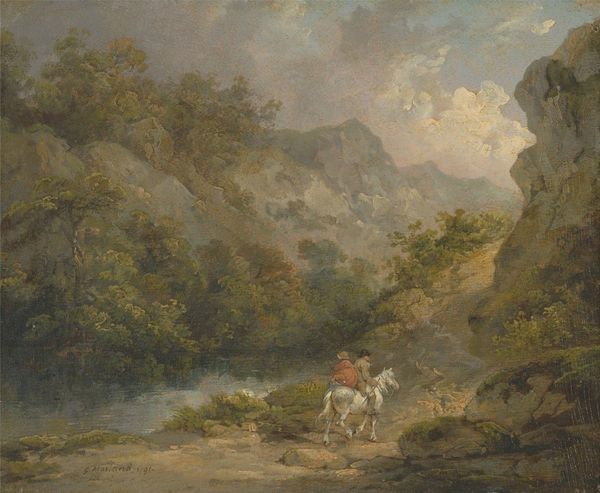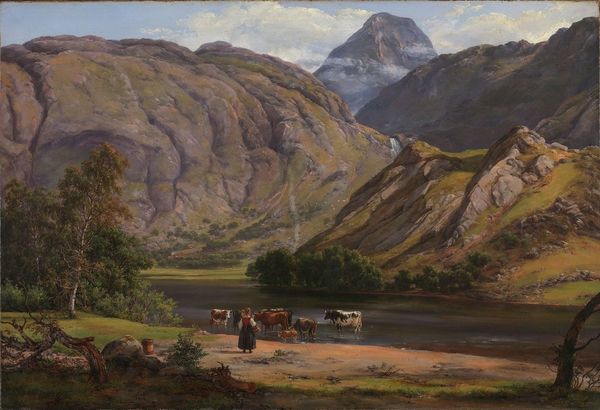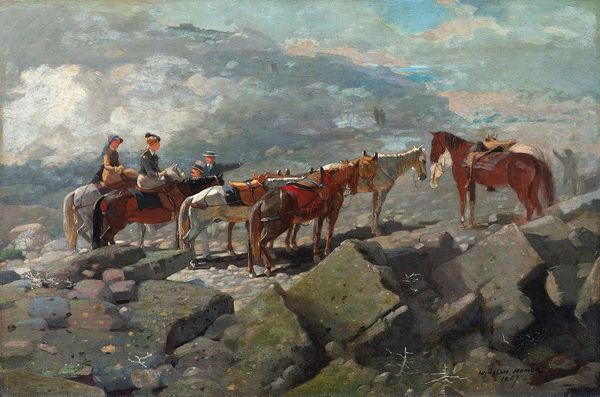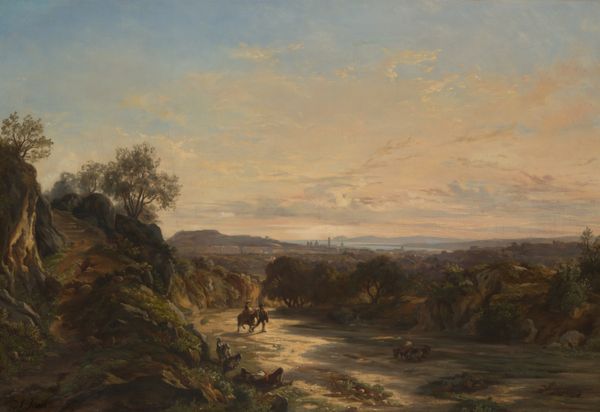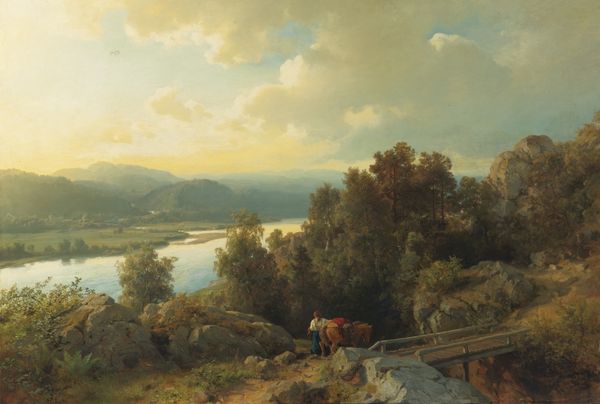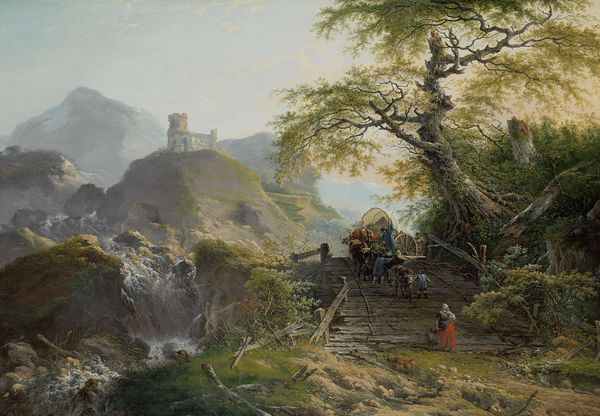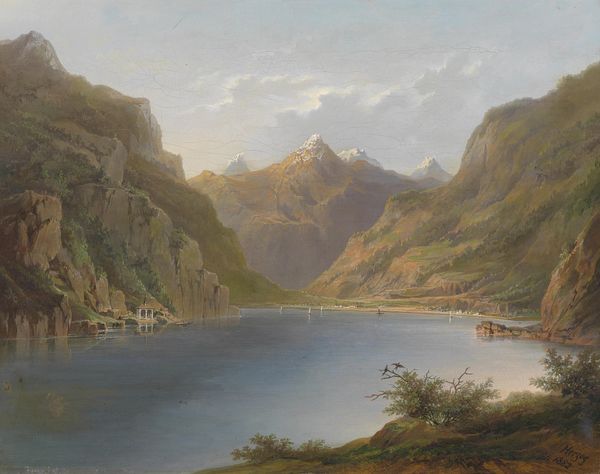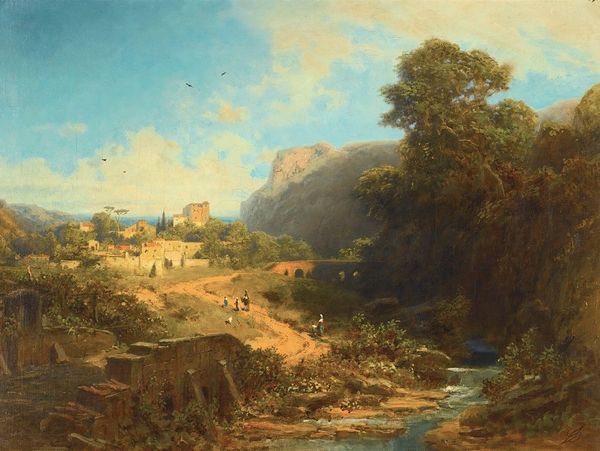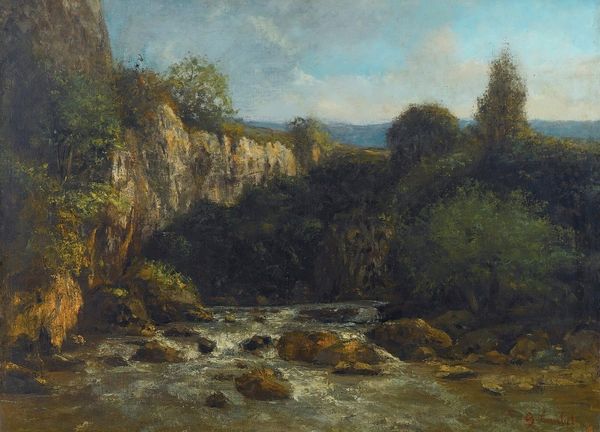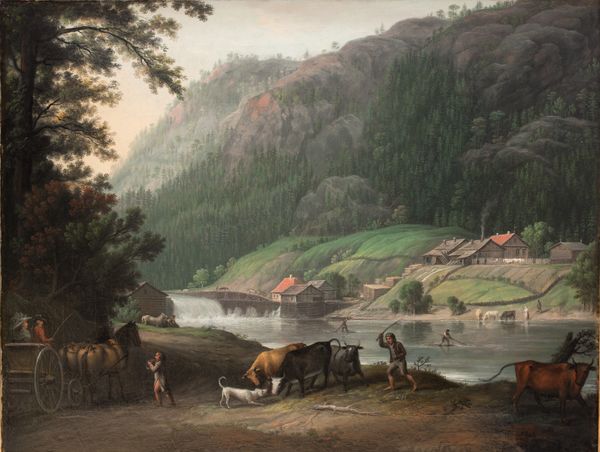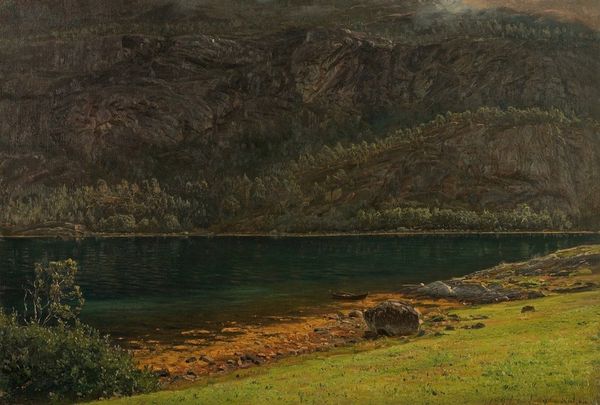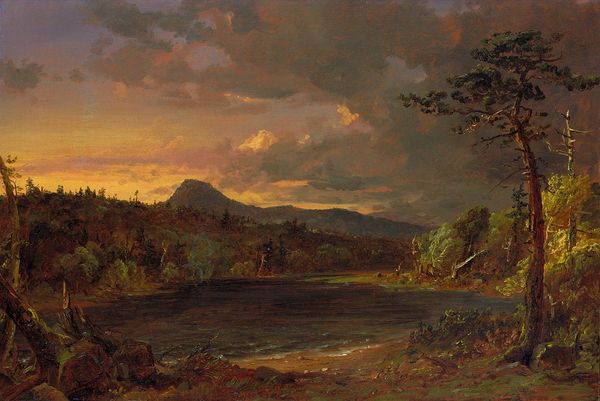
Dimensions: 14 7/8 × 18 1/8 in. (37.8× 46.2 cm)
Copyright: Public Domain
Curator: Looking at this piece, the riders emerging from the ravine, I immediately feel this deep quietness, a certain solitude. It is so muted. Editor: Indeed. What you're describing really captures the mood evoked by Victor Pierre Huguet's "Ravine Near Biskra." Created somewhere between 1890 and 1900, using oil paints, this canvas captures a scene in Algeria. The Art Institute of Chicago currently holds this one. Curator: It seems, I suppose, rather "orientalist," although I suppose that's inevitable, but what do you notice about the human figures? They seem deliberately not to look at each other... Editor: Absolutely. In the context of orientalism, the figures often embody a sense of exoticism, appealing to European artistic conventions. Notice the apparel, and even their posture. Each element suggests a romanticized narrative for Western consumption, but, thinking about imagery, consider how water and travel act as transitional symbols in many cultural traditions? Curator: Very true. Here, crossing water could signify moving between different states of being, literally traversing a boundary between familiar and unknown territories, speaking of European conceptions of North Africa and their own experience. Is it the figures who make the setting what it is, or the land they are dwarfed by that creates their identities in our eyes? Editor: A worthwhile question, yes! This ties into the politics of landscape painting during that time. These weren’t simply depictions; they carried cultural baggage, shaping and reinforcing certain perceptions of North Africa and its people. How were images of colonial holdings sold to a buying, Western audience? This tells us part of that story, doesn't it? Curator: It certainly does. Well, contemplating those political layers really adds depth to how I now see those solitary figures by the ravine's edge. The quietness of this work seems more pregnant with social meaning than I initially considered. Editor: And thinking of this ravine as a transition point has also revealed how potent those seemingly tranquil painted moments can be in reflecting our ongoing cultural dialogue.
Comments
No comments
Be the first to comment and join the conversation on the ultimate creative platform.

